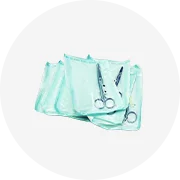About products and suppliers
Get blood transfusion packs at incredible prices only on Alibaba.com. These blood transfusion packs are critical for ensuring that the blood you collect doesn't coagulate and remains stabilized for later usage. Also called vacutainers, these tubes are made using plastic or glass. They contain a rubber stopper at the mouth to create a vacuum inside the tube. It helps in easing the process of drawing the fluid back, as well as preserving it.
There are several types of blood transfusion packs that you can purchase at Alibaba.com. These tubes have different colored caps, which helps in identifying their purpose and additives. The light blue tubes have 3.2% sodium citrate and are used in coagulation tests. The red (or gold) tubes have a clot activating substance present. They are commonly used in chemistry labs and serology and immunology tests. The gray tubes have sodium fluoride and oxalate ions as additives. They are used in tests for glucose, lactic acid, and blood alcohol. Lastly, the lavender or pink tubes have potassium EDTA, while the green tubes have a heparin compound as an additive. The former is employed in blood banks and hematology tests, while the latter finds use in routine chemistry tests.
The blood transfusion packs find use in a range of industries and branches of science. From chemistry labs to blood banks to clinics to beverages to pharmacies, their applications are innumerable. Depending on your intended use and the additives required, you can easily choose the right type of tube.
You can purchase blood transfusion packs according to your preferences at Alibaba.com and get astounding offers and discounts. They are very crucial in preserving the provided blood, which is why you must not compromise on their quality. For purchasing any medical equipment, there's no need to visit any other place.










